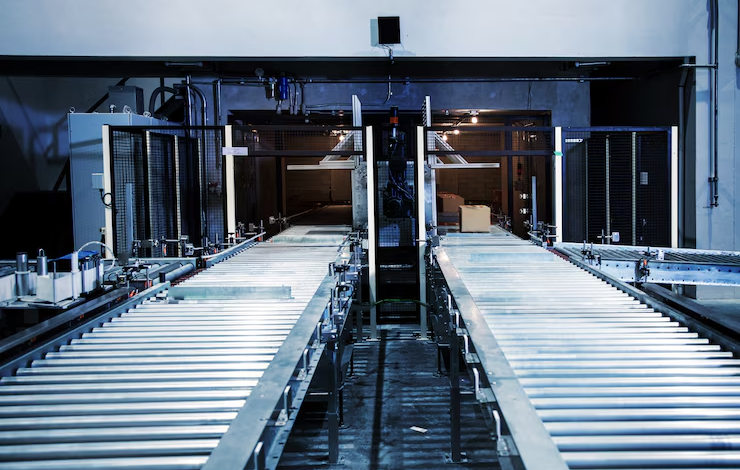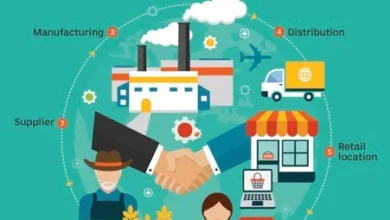Integral Role of Heat-Resistant Conveyor Belts in Cement Plant Operations

In the dynamic landscape of cement manufacturing, the efficiency and reliability of conveyor systems play a pivotal role in ensuring seamless operations.
Among the various components of conveyor systems, heat-resistant conveyor belts stand out for their indispensable contribution to the functioning of cement plants.
This article explores the multifaceted role of heat-resistant conveyor belts in cement plant operations, elucidating their significance across different stages of the manufacturing process.
1. Understanding Heat-Resistant Conveyor Belts
Heat-resistant conveyor belts from Monster Belting are designed to withstand high temperatures, making them ideal for conveying materials in cement industries.
These belts are constructed using materials that exhibit exceptional heat resistance properties, ensuring durability and longevity in demanding environments.
2. Raw Material Handling
In cement plants, the journey of raw materials—from extraction to processing—begins with efficient material handling systems.
Heat-resistant conveyor belts facilitate the smooth transportation of raw materials such as limestone, clay, shale, and gypsum from the quarry to the processing units.
Their ability to withstand high temperatures ensures uninterrupted operation, even in areas near kilns or other heat sources.
3. Kiln Feeding
The heart of cement production lies within the kiln, where raw materials undergo a series of chemical and physical transformations to produce clinker—the key ingredient in cement.
- Efficient Raw Material Feeding: Heat-resistant conveyor belts enable the seamless transportation of raw materials into the kiln, ensuring a steady supply for the production process.
- Optimized Thermal Efficiency: By facilitating consistent and uninterrupted feeding, these belts contribute to the optimal thermal performance of the kiln, enhancing energy efficiency and reducing fuel consumption.
- Process Stability: The resilience of heat-resistant conveyor belts ensures stable and reliable material feeding, minimizing fluctuations in the production process and maintaining consistent quality standards.
- Prevention of Belt Damage: Their ability to withstand high temperatures prevents belt damage or failure, safeguarding against costly downtime and maintenance interruptions.
4. Clinker Handling
Once the raw materials have been transformed into clinker, efficient handling becomes paramount. Heat-resistant conveyor belts facilitate the transportation of hot clinker from the kiln to the subsequent stages of the cement manufacturing process.
Their ability to withstand high temperatures ensures safe and reliable conveying, minimizing the risk of belt failure or damage.
5. Cooling and Storage
After exiting the kiln, clinker undergoes a cooling process to reduce its temperature before storage and further processing.
Heat-resistant conveyor belts are instrumental in transporting hot clinker to cooling systems such as rotary coolers or air quenching towers.
Their robust construction and heat resistance enable efficient conveying, facilitating the cooling process and ensuring optimal product quality.
6. Cement Grinding and Packaging
Once cooled, clinker is ground to produce cement, which is then packaged for distribution. Heat-resistant conveyor belts play a crucial role in transporting clinker from storage silos to the grinding mills.
Additionally, they facilitate the transportation of finished cement from the grinding mills to packaging units.
Their reliability and heat resistance contribute to the efficiency of the grinding and packaging processes, ensuring timely production and delivery of cement products.
7. Environmental Considerations
In addition to withstanding high temperatures, heat-resistant conveyor belts must also meet stringent environmental regulations prevalent in the cement industry.
These regulations often impose limits on emissions, requiring conveyor belts to comply with environmental standards.
Manufacturers of heat-resistant conveyor belts prioritize sustainability and environmental responsibility, ensuring that their products adhere to regulatory requirements while maintaining high performance.
8. Maintenance and Reliability
Maintaining the reliability of conveyor systems is essential for uninterrupted cement plant operations. Regular maintenance of heat-resistant conveyor belts is crucial to prolonging their lifespan and preventing unexpected downtime.
- Proactive Maintenance Approach: Cement plants implement a proactive maintenance strategy to ensure the ongoing reliability of conveyor systems.
- Prolonged Lifespan: Regular maintenance of heat-resistant conveyor belts extends their lifespan, reducing the frequency of replacements and associated costs.
- Prevention of Downtime: Scheduled maintenance prevents unexpected downtime by identifying and addressing potential issues before they escalate into major problems.
- Inspections: Regular inspections allow plant operators to identify any signs of wear, damage, or malfunctioning components, enabling timely interventions.
- Lubrication: Proper lubrication of conveyor components reduces friction and wear, prolonging their lifespan and ensuring smooth operation.
- Cleaning: Regular cleaning of conveyor belts and components removes debris and contaminants, preventing buildup and potential damage.
- Timely Replacement: Prompt replacement of worn or damaged components minimizes the risk of equipment failure and ensures continued reliability.
- Performance Optimization: By adhering to a proactive maintenance schedule, cement plants optimize the performance and efficiency of their conveyor systems, contributing to overall operational excellence.
9. Innovation and Advancements
The field of conveyor belt technology is constantly evolving, with ongoing innovations aimed at enhancing performance, efficiency, and safety.
Manufacturers continually research and develop new materials and manufacturing techniques to improve the heat resistance, durability, and overall performance of conveyor belts in high-temperature environments.
These advancements enable cement plants to benefit from cutting-edge conveyor solutions that meet the evolving needs of the industry.
Conclusion
Heat-resistant conveyor belts play an integral role in cement plant operations, facilitating the efficient and reliable transportation of materials throughout the manufacturing process.
From raw material handling to clinker transportation and beyond, these specialized belts withstand high temperatures and harsh operating conditions, ensuring uninterrupted production and optimal product quality.
As cement plants strive for greater efficiency, sustainability, and reliability, the importance of heat-resistant conveyor belts remains paramount in shaping the future of the industry.



